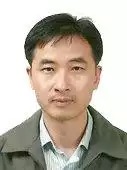Polypropylene
POLYOLEFIN (Olefin, Polypropylene)
Manufactured Fiber
CHARACTERISTICS
- Lightweight, lightest fiber, it floats
- Strong
- Abrasion resistant, resilient
- Stain-, static-, sunlight-, and odor-resistant
- High insulation characteristics
- Resists deterioration from chemicals, mildew, perspiration, rot and weather
- Fast drying
- High wickability
- Color fast, because colors are incorporated during fiber forming stage
- Spills can be readily wiped up
- Static and pilling can be a problem
- Ironing, washing and drying need to be done at low temperature
- Non-allergenic
MAJOR END USES:
Apparel
- activewear,
- sportswear,
- jeans,
- socks,
- underwear,
- lining fabrics.
Home Fashions
- indoor and outdoor carpets,
- carpet backing,
- upholstery,
- wall coverings,
- furniture
- bedding construction fabrics.
Comment
Polyolefin is also called Olefin or Polypropylene. Of all the fibers, this fiber may least familiar to you. Since its development in 1961, polyolefin has been used almost exclusively in the home furnishings area and the high performance activewear market, for such items as backpacking, canoeing, and mountain climbing apparel. However, within the last few years producers of this fiber have made in-roads into the mainstream apparel market. So, polyolefin is a fiber that you may be seeing more of going forward.
It is now being blended with cotton for use in the denim market, and is also being tested is in the swimwear market.
In fact, Asics® Japan has developed a swimsuit made of a blend of polyolefin and Lycra®, as the official swimsuit for the Japanese Olympic Swim Team.
Their main reason for selecting polyolefin is that it's the least absorbent of all the manufactured fibers, and is the only fiber that floats. (Swimmers will try anything to cut a milli-second off their times!)
'Textile_industry' 카테고리의 다른 글
| WHAT IS SUBLIMATION? (0) | 2016.07.23 |
|---|---|
| 베트남 공단 정보 (0) | 2016.06.22 |
| 글로벌 의류수출기업 ‘규모경쟁 가열’ (1) | 2016.06.22 |
| 염료_다이스타 (1) | 2016.04.22 |
| 염료_NOVACRON (0) | 2016.04.22 |
